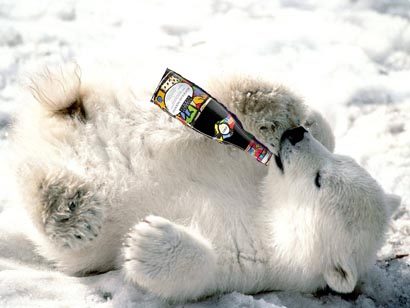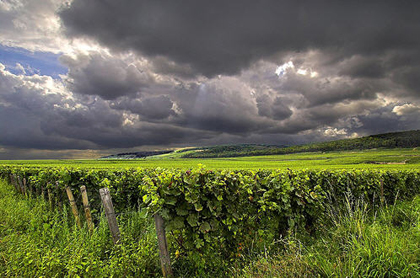Dr Vino's wine blog
wine talk that goes down easy
Hope, big gulp, Chinese sommeliers, voting – tasting sized pours
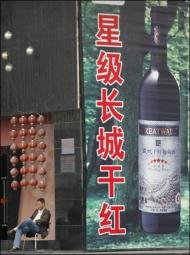 Comrade, would you prefer red?
Comrade, would you prefer red?
The sommelier becomes an official occupation in China, “to help meet surging demand in the increasingly prosperous nation,” state media reported Sunday. Related: “nuts chef” also joins the list. [via AFP, thanks reader Grayman!]
Little Luxembourg, big gulp
China may be big, but Luxembourg is thirsty. The Grand Duchy consumes the most alcohol per capita of any country in the world. France, Ireland, Hungary, and the Czech Republic round out the top five. [MSNBC]
Menu for Hope
See the creative donations from food and wine bloggers — bid and help UNWFP! [Chez Pim]
Claret, no merci
English wine outsells than Bordeaux in England?!? So says supermarket Waitrose. Are they doing it for the smaller carbon footprint? [Decanter]
Dueling critics
The 2003 Quinault l’Enclos (find this wine), is it “all about finesse, balance, and purity” or “low in acidity, rather bland and yet again lacking freshness and definition. A couple of sips is enough.”? We love dueling critics–and it’s even more fun when the shootout is in one publication, in this case, Robert Parker’s The Wine Advocate! Incredible! Diversity of opinion is tolerated! [see more on Rockss and Fruit]
USB wine?!?
You might think this blend of wine and technology is from California, but this laptop spigot is francais–and in development until 2039. [link]
From feast to famine
The Australian wine lake has dried up. Was it the thirst of Chinese sommeliers? No, the industry has swung from glut to shortages in two years because of drought. [NZ Herald]
Vote Vino!
This site has been named a finalist for “Best Food Blog – Drinks” in annual awards at WellFed. Lend a click if you can! [WellFed.net]
1995 Dom Perignon Methuselah in white gold – how much?
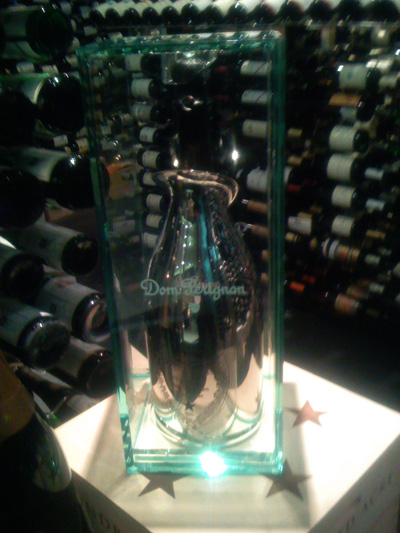
If the bling is the thing this holiday season, check out this Methuselah (6 liters, or the equivalent of eight regular bottles) of Dom Perignon champagne on display in a midtown Manhattan wine store. The elegant photo and lighting is thanks to my cameraphone.
Care to guess the price? I imagine the glass case is included. Be the first to guess correctly and you will win…OK, not the bottle. Just our respect and admiration this time–or maybe an hour in Mark’s Petrus cage?
FYI check here for a baseline price on the regular bottle, sans white gold.
UPDATE 12/1: Read more…
My kind of school spirit: Chateau Palmer
 How would you like to intern at a winery during harvest? OK, one of the top chateaux in Margaux? OK, now add that you are a high school student and think how cool that would be!?!?
How would you like to intern at a winery during harvest? OK, one of the top chateaux in Margaux? OK, now add that you are a high school student and think how cool that would be!?!?
Following our discussion of kids at wineries, I was delighted to learn that Chateau Palmer has an open view on the subject–at least for teenagers. Bernard de Laage explained to me in New York recently that Danish high school students have been coming to the chateau to help with harvest since 1997. Danish students have to do a work-study and some clever teacher there dreamed up the idea of bringing them down by bus for a month. Um, how come no teacher at my high school ever had this brilliant idea?
Bernard told me that the students are great workers for at least two reasons. First, “they have no bad habits.” He was speaking to their harvesting abilities, of course. Because they have done no previous vineyard work, they “do exactly what we say,” Bernard told me. Second, he said that “we can rely on them–they’re here every day.” Local workers for hire, by contrast, are available some days, but not others as they scramble to help across many vineyards.
It seems like a jolly time judging by the tiny photos on the Chateau Palmer blog. I wonder what they drank at meal time? My guess is not rum and coke.
Bojo No-vo, polar bears, and PR-oops
Today is the day that Beaujolais nouveau (aka NO-vo) is air-dropped on the world. Remember the carbon footprint! Say no to Nouveau for the polar bears.
Some nouveau is sent via ship and the carbon dioxide emissions of that mode of transport are considerably less. Sending a bottle of Georges Duboeuf Beaujolais nouveau by boat to New York creates about 1500g of CO2e. Flying it in creates about 6000g. So if you’re going to say cheers with nouveau, do it after the containers arrive via ship and say cheers tonight with a lovely cru Beaujolais that already is here, via boat.
Even if you wait, you’ll likely still be subsidizing the cost of air freight. The other day a retailer told me that they have to place an order for the all the no-vo they want for the year, say 30 cases. They ask for 10 to be delivered for sale today and have to pay more for those. Then the rest of the order comes later at a lower rate. So consumers pay two rates? No, it gets cost averaged so those who wait underwrite the speed (and carbon) of those who buy today.
And in related news, look what I am turning down, dear reader, in the name of lowering my own carbon footprint! This just in from a PR person:
I am writing you today to invite you and a friend to have the ultimate Beaujolais Nouveau experience. Just in case you have forgotten, this Thursday is Beaujolais Nouveau- a celebration of the first wine of the vintage. Each year our company, which represents the wine-producing region, parties in style with a hop-on/hop-off luxury-bus bar crawl to try different Nouveaus. What’s makes this party even more special is that in-between bar stops we make our way through the city drinking Beaujolais-Village and Beaujolais Cru wines served by fabulous “Beaujoladies” and “Beaujo-Beau.” If you would like to take part in this fun event please contact me directly via email or at (212) xxx-xxxx.
My beef with Georges Duboeuf: Beaujolais nouveau
“Korea’s Airlines Enjoying Lots of Wine” read a recent headline in the English Chosun. Really, now, do you want the airlines to be enjoying wine? I’d prefer to see you lending your wine’s enjoyment to ships.
Beaujolais nouveau is airdropped on the world the third Thursday of November. I would submit to you that the carbon cost of air freight is only worthy for a short list wines, and one that was harvested just a few weeks prior is not on it.
Sorry to rain on your Beaujolais nouveau parade. I’ve never been much of a fan of the wine from a taste perspective. But at 12% alcohol, it’s an innocuous enough gateway wine. I really do enjoy the gamay grape and cru Beaujolais–that’s a great way to get your Bojo working.
For consumers who enjoy the nouveau, I suggest leaving it behind this Year of the Falling Dollar and getting to know the differences between a Fleurie and a Morgon, both from the same grape and general area but world’s apart in terms of quality. Basically anything from 2005 works; here’s a run down of some crus with my seal of approval. Many of the wines, bought a year or so ago by importers and stores, are just a few dollars more than what the 07 nouveau will be.
With my earlier bottled water ban and recent calculations of the carbon footprint of wine, I must make this year a Bojo No-vo. Stick it on a ship, use lighter packaging and we’ll see about 2008.
Sincerely,
Dr. Vino
Calculating the carbon footprint of wine: my research findings
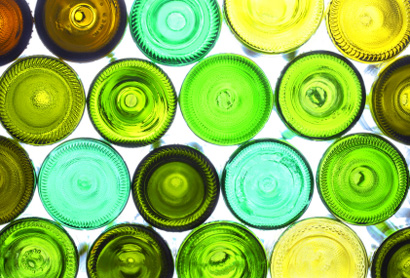
Is that a whiff of raspberries and leather you get from that red wine–or a whiff of petroleum? With some premium wines consuming three times their weight in petroleum, don’t be surprised if it is the latter.
My previous postings on the carbon footprint of wine made me want to determine just how much carbon is involved in the making and transporting of our favorite beverage. So I collaborated with Pablo Paster, a sustainability metrics specialist, and we ran the numbers. Our findings have just been published as a working paper for the American Association of Wine Economists, available here as a pdf.
While I welcome your comments on the whole paper, I’ll post some of the key findings here:
* Organic farming has lower greenhouse gas (GHG) intensity than conventional farming but I was surprised that the difference wasn’t greater. Clearly there may be other differences in a local ecosystem but the GHG difference was surprisingly small. But on the whole, it was the transportation that played a more significant role from a GHG perspective.
* Regarding the “food miles” debate, we find that distance does matter.
* But not all miles that a bottle travels are the same. Efficiencies in transportation make container ships better than trucks, which in turn are better than planes.
* Shipping premium wine, bottled at the winery, around the world mostly involves shipping glass with some wine in it. In this regard, drinking wine from a magnum is the more carbon-friendly choice since the glass-to-wine ratio is less. Half-bottles, by contrast, worsen the ratio.
* Shipping wine in bulk from the source and bottling closer to the point of consumption lowers carbon intensity.
* Light packaging material such as Tetra-Pak or bag-in-a-box has much less carbon intensity.
* Using oak chips is a more carbon friendly alternative than oak barrels, particularly those that are shipped assembled and empty around the world
* There’s a “green line” that runs down the middle of Ohio. For points to the West of that line, it is more carbon efficient to consume wine trucked from California. To the East of that line, it’s more efficient to consume the same sized bottle of wine from Bordeaux, which has had benefited from the efficiencies of container shipping, followed by a shorter truck trip. In the event that a carbon tax were ever imposed, it would thus have a decidedly un-nationalistic impact.
What does this mean for the green wine consumer? Drinking a wine made without agrichemicals, from larger format bottles, or wine that has traveled fewer miles is the more “green” option. Beyond these points (or in addition to them), you could perform your own carbon offsets, for example, by giving up one bottle for another and saying no to bottled water.
“Red, White and “Green”: The Cost of Carbon In the Global Wine Trade,” By Tyler Colman and Pablo Paster
UODATE: This paper was been published in the March 2009 issue of the Journal of Wine Research
image 1: istockphoto.com
2007 vintage verbatim: Tom Lubbe on biodynamics
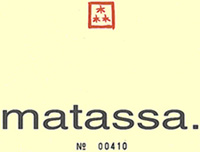 Tom Lubbe, a biodynamic vigneron in Roussillon who hails originally from South Africa, writes in responding to the statement, “We’ll see who are the real biodynamic producers this year. If they’re really biodynamic, this year they won’t have any wine.” I tasted Tom’s excellent old-vine Grenache called Matassa earlier this year. To his email:
Tom Lubbe, a biodynamic vigneron in Roussillon who hails originally from South Africa, writes in responding to the statement, “We’ll see who are the real biodynamic producers this year. If they’re really biodynamic, this year they won’t have any wine.” I tasted Tom’s excellent old-vine Grenache called Matassa earlier this year. To his email:
This is the kind of lunatic (no positive connection to lunar cycles) assertion that the Bordelais, or those who spend too much time in the environs, are prone to making. A difficult vintage should have no bearing on the basis of your cultural method in the vineyard. The assumption that no “truly” biodyamic (and organic?) vigneron could make wine in 2007 shows a paucity of comprehension for what biodynamics (and organics?) actually entails and the multiple benefits that issue from a more holistic, natural approach to viticulture. A naturally farmed vineyard’s ability to resist pathogens is dependent on the condition of the soil. If the soil is alive with a rich diversity of microbial activity (and the oft forgotten earthworm) the vineyard’s resistance to disease is naturally stronger , much like the bacteria we need in our gut . In fact, the real grape when fighting off pathogens such as oidium or downy mildew without the interference of systemic chemicals produces increased levels of polyphenols, which as we now know affect not just taste but our health and nutrition as well. In real wine I like to think these three elements (taste, nutrition and health) are as intimately linked as they are in real food.
Indeed, if a vigneron labours through the years to regenerate a living soil and still cannot take in a reasonable harvest this would be a sure sign that they are working a mediocre terroir for grapes and they should either relocate their viticultural efforts or plant rice. That Bordeaux was originally a swamp developed by the English and Dutch, two essentially mercantile/military nations with insatiable thirsts for cheap booze, does come to mind when regarding the nature and frequency of bad vintages in Bordeaux. (Does M. Rolland do sake?) Kampai, Tom
Related: “Green wine: the zen forest of Matassa, Roussillon”
“2007 vintage verbatim: Nicolas Joly on biodynamics“
2007 vintage verbatim: Nicolas Joly on biodynamics
How will vintage 2007 turn out in France where it rained much of the summer? A few weeks ago, I posted a comment that someone in the trade in France told me: “We’ll see who are the real biodynamic producers this year. If they’re really biodynamic, this year they won’t have any wine.”
With a rebuttal today, via email from the Coulée de Serrant in Savennieres in Loire, we have Nicolas Joly. He is a leading practitioner of biodynamics and wrote the book “From Sky to Earth” to help vignerons around the world in their conversion to biodynamics. I say vignerons and not “winemakers” because his business card reads “Nicolas Joly, Gérant de la Société, Nature assistant and not a winemaker.” To his email:
All serious biodynamists had no problems with disease! I lost maybe 1% of the crop. There were as many people caught on the conventional side as on the organic/biodynamic side. Any serious person will confirm this. Those who were caught were those who have not much experience with mildew-rare though they are. Mildew’s development is a very fast–one or two days as opposed to a month for oidium–so you need to react very fast reaction. It’s simple: treat after the rain with very small doses of copper each time. We used around 5.5 to 6 kg of cooper per hectare this year, about 50% more than last years. We had the strongest pressure for 20 years.The 501 BD treatment was also very efficient. The negative statements come from people who either have no understanding of BD or who want to justified the fact that they did not move toward a better farming.
I have a new book coming in the US soon for consumers (it just came out in French ) and will be available in Italian, Portuguese and Spanish soon.
On February 9th and 11th part of the group “Return to Terroir” will be in Montreal and Toronto [for a tasting of biodynamic wines].
(image, with permission)
